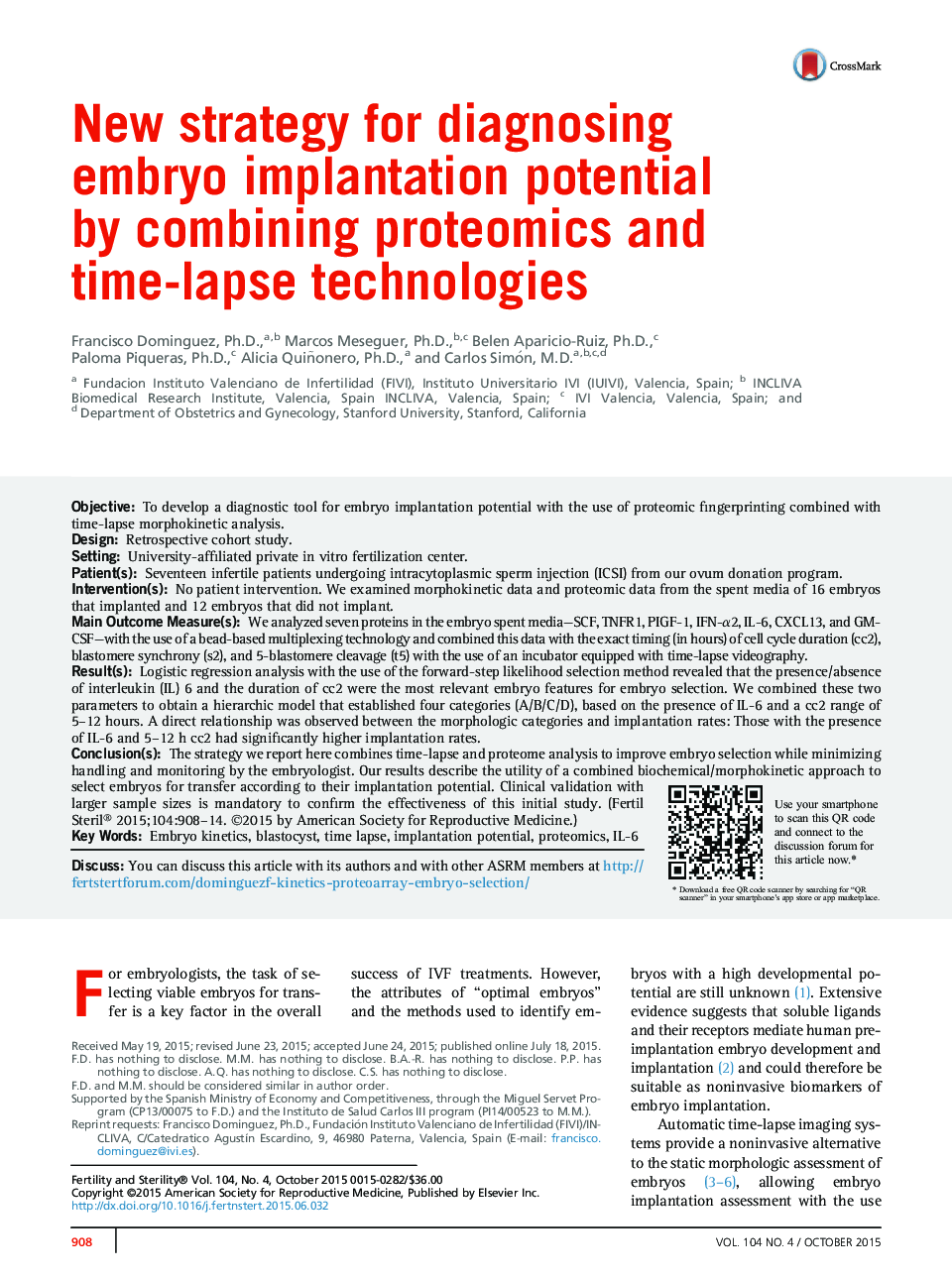| کد مقاله | کد نشریه | سال انتشار | مقاله انگلیسی | نسخه تمام متن |
|---|---|---|---|---|
| 3935805 | 1253426 | 2015 | 7 صفحه PDF | دانلود رایگان |

ObjectiveTo develop a diagnostic tool for embryo implantation potential with the use of proteomic fingerprinting combined with time-lapse morphokinetic analysis.DesignRetrospective cohort study.SettingUniversity-affiliated private in vitro fertilization center.Patient(s)Seventeen infertile patients undergoing intracytoplasmic sperm injection (ICSI) from our ovum donation program.Intervention(s)No patient intervention. We examined morphokinetic data and proteomic data from the spent media of 16 embryos that implanted and 12 embryos that did not implant.Main Outcome Measure(s)We analyzed seven proteins in the embryo spent media—SCF, TNFR1, PIGF-1, IFN-α2, IL-6, CXCL13, and GM-CSF—with the use of a bead-based multiplexing technology and combined this data with the exact timing (in hours) of cell cycle duration (cc2), blastomere synchrony (s2), and 5-blastomere cleavage (t5) with the use of an incubator equipped with time-lapse videography.Result(s)Logistic regression analysis with the use of the forward-step likelihood selection method revealed that the presence/absence of interleukin (IL) 6 and the duration of cc2 were the most relevant embryo features for embryo selection. We combined these two parameters to obtain a hierarchic model that established four categories (A/B/C/D), based on the presence of IL-6 and a cc2 range of 5–12 hours. A direct relationship was observed between the morphologic categories and implantation rates: Those with the presence of IL-6 and 5–12 h cc2 had significantly higher implantation rates.Conclusion(s)The strategy we report here combines time-lapse and proteome analysis to improve embryo selection while minimizing handling and monitoring by the embryologist. Our results describe the utility of a combined biochemical/morphokinetic approach to select embryos for transfer according to their implantation potential. Clinical validation with larger sample sizes is mandatory to confirm the effectiveness of this initial study.
Journal: Fertility and Sterility - Volume 104, Issue 4, October 2015, Pages 908–914